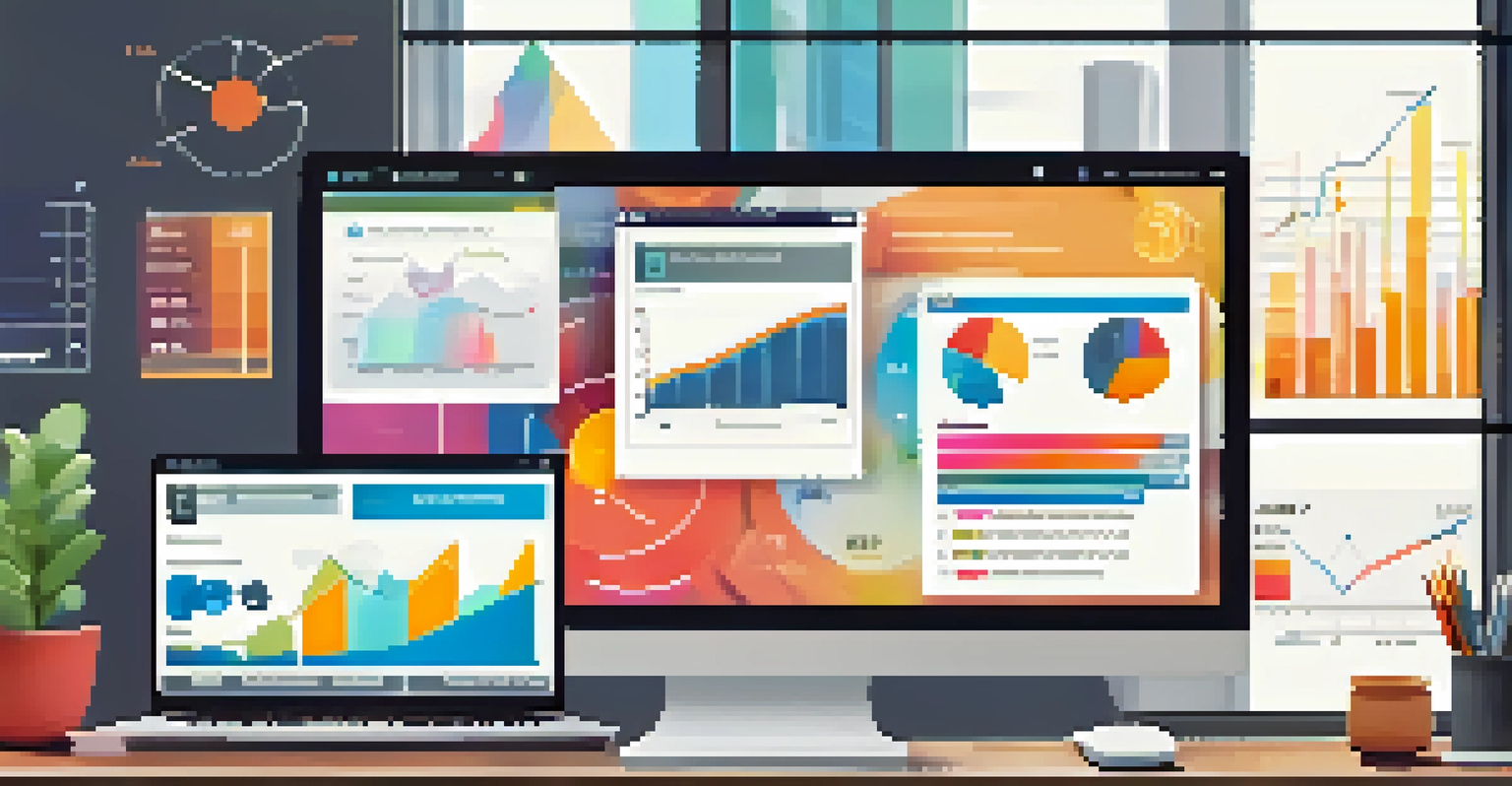Measuring the Success of Your LMS Through Analytics

Understanding LMS Analytics: The Basics
Learning Management System (LMS) analytics are crucial for understanding how users interact with your training programs. By tracking user engagement, completion rates, and performance metrics, you can gauge the effectiveness of your learning initiatives. This foundational knowledge helps you identify areas for improvement, tailoring the learning experience to better meet your users' needs.
In the world of education, data is more than numbers; it's the key to understanding how to guide learners on their journey.
For instance, if you notice a significant drop-off at a particular module, it might indicate that the content is too complex or not engaging enough. This insight can guide you in revising that section to enhance user experience. Ultimately, grasping the basics of LMS analytics sets the stage for deeper insights into your training programs.
Related Resource
In summary, understanding what LMS analytics entail is the first step toward measuring success. With this knowledge, you can leverage data to make informed decisions that enhance the learning journey.
Key Metrics to Track for LMS Success
To effectively measure the success of your LMS, it's essential to focus on key metrics like user engagement, course completion rates, and learner satisfaction. User engagement can be gauged by tracking logins, time spent on courses, and interaction with content. High engagement often correlates with better retention and understanding.

Course completion rates provide insights into how many learners finish their training, indicating not just interest but also effectiveness. If completion rates are low, it may signal that the courses need to be more engaging or relevant to the learners' needs. Additionally, gathering feedback through surveys or assessments can offer valuable insights into learner satisfaction and areas for improvement.
Importance of LMS Analytics
Understanding LMS analytics is vital for improving training programs by tracking user engagement and performance metrics.
By diligently tracking these key metrics, you establish a clearer picture of your LMS's performance. This data empowers you to make adjustments that can enhance learner engagement and overall satisfaction.
Using Data Visualization for Better Insights
Data visualization plays a significant role in making complex LMS analytics easier to interpret. Utilizing charts, graphs, and dashboards can help you quickly grasp trends and patterns in your data. For instance, a dashboard showing real-time engagement metrics allows you to identify which courses are thriving and which may need attention.
Feedback is the breakfast of champions, and in the realm of learning, it fuels continuous improvement.
By visually representing data, you can communicate findings to stakeholders more effectively. A compelling visual can highlight successes and areas for improvement, making it easier to rally support for necessary changes. This approach not only simplifies data interpretation but also enhances the storytelling aspect of your analytics.
Related Resource
Incorporating data visualization tools into your analytics strategy can transform raw data into actionable insights. The clearer your data presentation, the more likely it is that stakeholders will understand and engage with your findings.
Setting Benchmarks for LMS Performance
Establishing benchmarks is crucial for assessing your LMS's performance over time. Benchmarks can be based on industry standards or your own historical data, providing a point of reference for measuring progress. For example, if the industry average for course completion rates is 75%, you can set that as a target for your own programs.
By comparing your metrics against these benchmarks, you can identify strengths and weaknesses in your LMS. If your completion rate is significantly lower than the benchmark, it may prompt a review of your course content or delivery methods. This practice encourages continuous improvement, as you strive to meet or exceed established standards.
Key Metrics for LMS Success
Focusing on metrics like user engagement and course completion rates helps identify areas for improvement and enhances learner satisfaction.
In essence, setting benchmarks not only provides a measurable goal but also fosters a culture of accountability within your organization. With clear targets in place, you can motivate teams to work towards achieving and surpassing them.
Analyzing Learner Feedback for Continuous Improvement
Learner feedback is an invaluable resource for enhancing your LMS. Regularly collecting and analyzing feedback through surveys, quizzes, and discussions can unveil insights into the learner experience. For instance, if learners consistently mention that certain topics are unclear, it becomes a priority to revisit and clarify that content.
In addition to identifying problem areas, learner feedback can also highlight what’s working well. Positive comments about specific modules or teaching styles can guide future content development, ensuring that successful elements are replicated. This two-way communication fosters a supportive learning environment where learners feel their opinions matter.
Related Resource
Ultimately, integrating learner feedback into your analytics strategy promotes a culture of continuous improvement. It allows you to adapt your LMS in real-time, ensuring it remains relevant and effective for your audience.
The Role of A/B Testing in LMS Optimization
A/B testing, or split testing, is a powerful tool for optimizing LMS content and delivery. By comparing two versions of a course or module, you can determine which one performs better in terms of engagement and completion rates. For example, you might test two different formats for a lesson—one with video content and another with text-based content—to see which resonates more with learners.
This approach allows data-driven decisions to enhance the learning experience. If one version significantly outperforms the other, you can adopt that format across similar courses, leading to better outcomes overall. Moreover, A/B testing encourages a culture of experimentation, fostering innovation within your training programs.
Leveraging Feedback for Improvement
Analyzing learner feedback is essential for continuous improvement, allowing you to adapt content and delivery to meet user needs effectively.
Incorporating A/B testing into your analytics strategy can uncover valuable insights that inform your content development. By continually experimenting and optimizing, you can ensure your LMS remains effective and engaging for learners.
Leveraging Analytics for Future Learning Strategies
The insights gathered from LMS analytics should inform your future learning strategies. By understanding what works and what doesn’t, you can create more effective learning paths tailored to your audience's needs. For instance, if data shows that interactive elements lead to higher engagement, you might incorporate more gamification into your courses.
Additionally, analyzing trends over time can help you anticipate learner needs and adapt your content accordingly. If a particular skill set is gaining prominence in your industry, you can prioritize developing courses around that topic. This proactive approach ensures your LMS remains relevant in an ever-evolving landscape.

Ultimately, leveraging analytics to shape your future learning strategies allows for a more adaptive and responsive LMS. By staying ahead of trends and aligning with learner preferences, you can significantly enhance the effectiveness of your training programs.